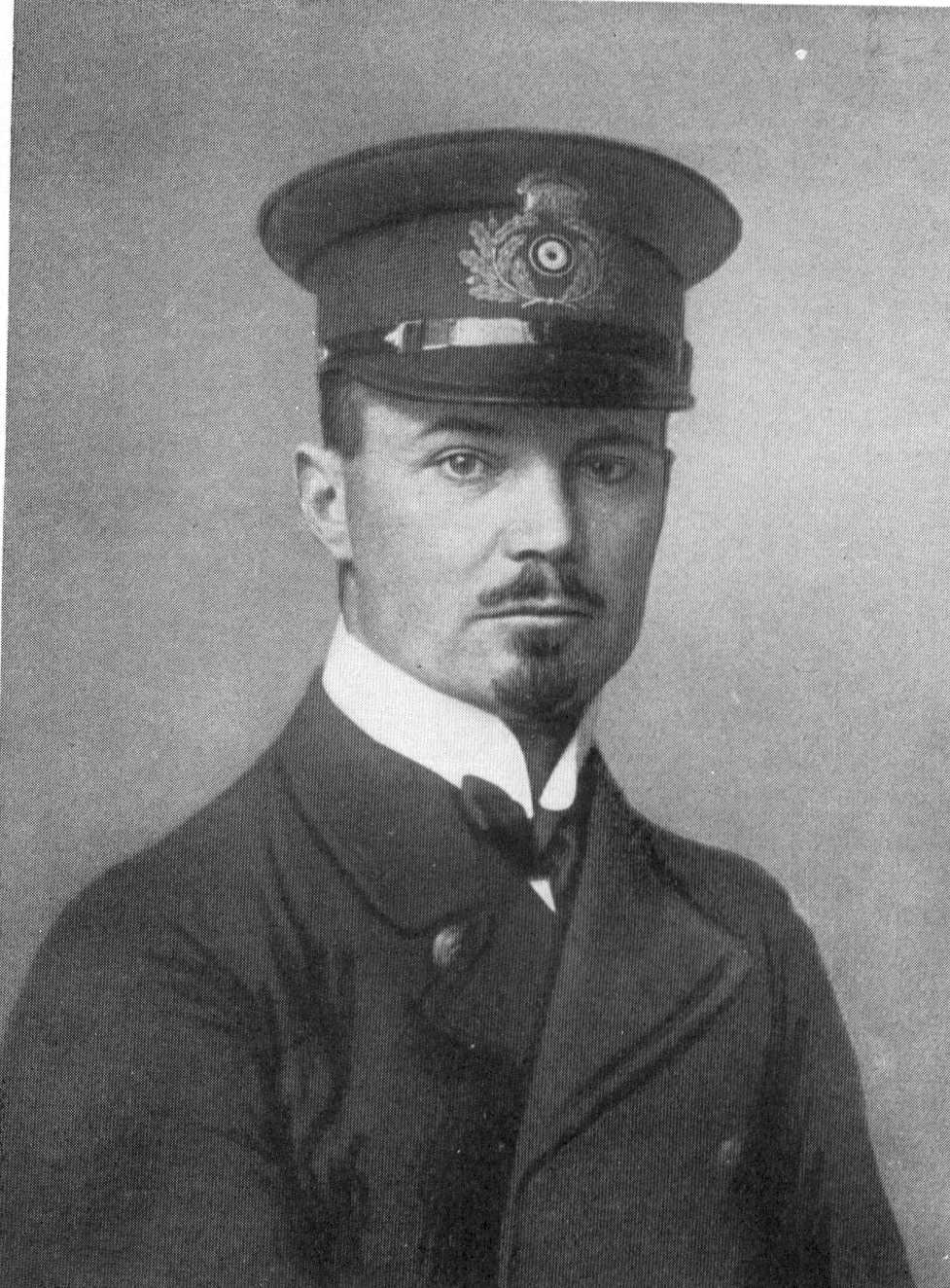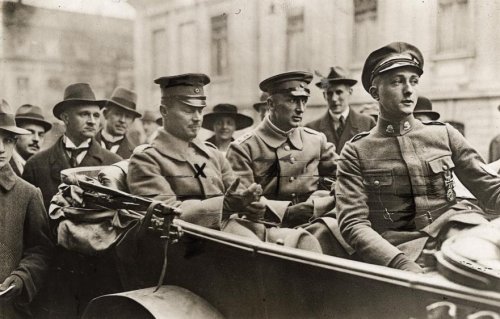|
Organisation Consul
Organisation Consul (O.C.) was an ultra-nationalist and anti-Semitic terrorist organization that operated in the Weimar Republic from 1920 to 1922. It was formed by members of the disbanded Freikorps group Marine Brigade Ehrhardt and was responsible for political assassinations that had the ultimate goal of destroying the Republic and replacing it with a right-wing dictatorship''.'' The group was banned by the German government in 1922. Origins The Organisation Consul (O.C.) grew out of the Marine Brigade Ehrhardt, a Freikorps unit that had been officially disbanded in 1920. Its namesake commander, Hermann Ehrhardt, formed the O.C. from the ranks of the Brigade after the failure of the 1920 Kapp Putsch, an attempted coup against the German national government in Berlin. His fighters formed the Association of Former Ehrhardt Officers which then became the Oganisation Consul. The O.C. was a militarily organized cadre group whose members were recruited largely from former mostly ... [...More Info...] [...Related Items...] OR: [Wikipedia] [Google] [Baidu] |
Hermann Ehrhardt
Hermann Ehrhardt (29 November 1881 – 27 September 1971) was a German naval officer in World War I who became an anti-republican and anti-Semitic German nationalist Freikorps leader during the Weimar Republic. As head of the Marinebrigade Ehrhardt, Marine Brigade Ehrhardt, he was among the best-known Freikorps leaders in the immediate postwar years. The Brigade fought against the local soviet republics that arose during the German Revolution of 1918–1919 and later was among the key players in the anti-democratic Kapp Putsch of March 1920. After the Brigade's forced disbanding, Ehrhardt used the remnants of his unit to found the Organisation Consul, a secret group that committed numerous politically motivated assassinations. After it was banned in 1922, Ehrhardt formed other less successful groups such as the ''Viking League, Bund Viking'' (Viking League). Because of his opposition to Adolf Hitler, Ehrhardt was forced to flee Germany in 1934 and lived apolitically in Austria ... [...More Info...] [...Related Items...] OR: [Wikipedia] [Google] [Baidu] |
Armistice Of 11 November 1918
The Armistice of 11 November 1918 was the armistice signed at Le Francport near Compiègne that ended fighting on land, sea, and air in World War I between the Entente and their last remaining opponent, Germany. Previous armistices had been agreed with Bulgaria, the Ottoman Empire and Austria-Hungary. It was concluded after the German government sent a message to American president Woodrow Wilson to negotiate terms on the basis of a recent speech of his and the earlier declared "Fourteen Points", which later became the basis of the German surrender at the Paris Peace Conference, which took place the following year. Also known as the Armistice of Compiègne (french: Armistice de Compiègne, german: Waffenstillstand von Compiègne) from the place where it was officially signed at 5:45 a.m. by the Allied Supreme Commander, French Marshal Ferdinand Foch, it came into force at 11:00 a.m. Central European Time (CET) on 11 November 1918 and marked a vi ... [...More Info...] [...Related Items...] OR: [Wikipedia] [Google] [Baidu] |
Centre Party (Germany)
The Centre Party (german: Zentrum), officially the German Centre Party (german: link=no, Deutsche Zentrumspartei) and also known in English as the Catholic Centre Party, is a Catholic political party in Germany, influential in the German Empire and Weimar Republic. It is the oldest German political party to be still in existence since its founding date. Formed in 1870, it successfully battled the '' Kulturkampf'' waged by Chancellor Otto von Bismarck against the Catholic Church. It soon won a quarter of the seats in the Reichstag (Imperial Parliament), and its middle position on most issues allowed it to play a decisive role in the formation of majorities. The party name ''Zentrum'' (Centre) originally came from the fact Catholic representatives would take up the middle section of seats in parliament between social democrats and conservatives. For most of the Weimar Republic, the Centre Party was the third-largest party in the Reichstag and a bulwark of the Republic, participati ... [...More Info...] [...Related Items...] OR: [Wikipedia] [Google] [Baidu] |
Matthias Erzberger
Matthias Erzberger (20 September 1875 – 26 August 1921) was a German writer and politician (Centre Party), the minister of Finance from 1919 to 1920. Prominent in the Catholic Centre Party, he spoke out against World War I from 1917 and as authorized representative of the Reich government signed the armistice between Germany and the Allied Powers. He was assassinated in 1921 by the right-wing terrorist group ''Organisation Consul''. Early career He was born on 20 September 1875 in Buttenhausen (today part of Münsingen) in the Kingdom of Württemberg, the son of Josef Erzberger (1847–1907), a tailor and postman, and his wife Katherina (née Flad; 1845–1916). In his early life he gained massive weight, which he lost in the course of thirty years. He attended the seminaries in Schwäbisch Hall and Bad Saulgau, where he graduated in 1894, and started a career as a primary school (''Volksschule'') teacher. While teaching, he also studied constitutional law and economics at ... [...More Info...] [...Related Items...] OR: [Wikipedia] [Google] [Baidu] |
Bundesarchiv Bild 146-1989-072-16, Matthias Erzberger
, type = Archive , seal = , seal_size = , seal_caption = , seal_alt = , logo = Bundesarchiv-Logo.svg , logo_size = , logo_caption = , logo_alt = , image = Bundesarchiv Koblenz.jpg , image_caption = The Federal Archives in Koblenz , image_alt = , formed = , preceding1 = , preceding2 = , dissolved = , superseding1 = , superseding2 = , agency_type = , jurisdiction = , status = Active , headquarters = PotsdamerStraße156075Koblenz , coordinates = , motto = , employees = , budget = million () , chief1_name = Michael Hollmann , chief1_position = President of the Federal Archives , chief2_name = Dr. Andrea Hänger , chief2_position ... [...More Info...] [...Related Items...] OR: [Wikipedia] [Google] [Baidu] |
Weimar Constitution
The Constitution of the German Reich (german: Die Verfassung des Deutschen Reichs), usually known as the Weimar Constitution (''Weimarer Verfassung''), was the constitution that governed Germany during the Weimar Republic era (1919–1933). The constitution declared Germany to be a democratic parliamentary republic with a legislature elected under proportional representation. Universal suffrage was established, with a minimum voting age of 20. The constitution technically remained in effect throughout the Nazi era from 1933 to 1945, though practically it had been repealed by the Enabling Act of 1933 and thus its various provisions and protections went unenforced for the duration of Nazi rule. The constitution's title was the same as the Constitution of the German Empire that preceded it. The German state's official name was ''Deutsches Reich'' until the adoption of the 1949 Basic Law. Origin Following the end of World War I, a German National Assembly gathered in the town of ... [...More Info...] [...Related Items...] OR: [Wikipedia] [Google] [Baidu] |
Joseph Berchtold
Joseph Berchtold (6 March 1897 – 23 August 1962) was an early senior Nazi Party member and a co-founder of both the (SA) and (SS). Berchtold served in World War I and upon Germany's defeat joined the German Workers' Party (DAP), a small extremist organization at the time. He remained in the party after it became known as the National Socialist German Workers' Party (Nazi Party; NSDAP) and went on to become the second commander of the (SS) from April 1926 to March 1927. After resigning as the SS leader, Berchtold spent much of his time writing for Nazi magazines and journals. He survived the war, but was arrested by the Allies. Berchtold was later released and died in 1962. He was the last surviving person to hold the rank of and the only one to survive the Second World War. Early life Born on 6 March 1897 in Ingolstadt, Berchtold attended school in Munich from 1903 to 1915. He went on to serve in the Royal Bavarian Army during World War I (1914-18) and held the rank of ... [...More Info...] [...Related Items...] OR: [Wikipedia] [Google] [Baidu] |
Julius Schreck
Julius Schreck (13 July 1898 – 16 May 1936) was an early senior Nazi official and close confidant of Adolf Hitler. Born in Munich, Schreck served in World War I and shortly afterwards joined right-wing paramilitary units. He joined the Nazi Party in 1920 and developed a close friendship with Adolf Hitler. Schreck was a founding member of the ''Sturmabteilung'' ("Storm Detachment"; SA) and was active in its development. Later in 1925, he became the first leader of the ''Schutzstaffel'' ("Protection Squadron"; SS). He then served for a time as a chauffeur for Hitler. Schreck developed meningitis in 1936 and died on 16 May of that year. Hitler gave him a state funeral. Early life Julius Schreck was born on 13 July 1898 in Munich in Bavaria. He served in the German Army during World War I. After the war ended, Schreck became an early member of the National Socialist German Workers' Party (Nazi Party; NSDAP), having joined in 1920 and documented as member #53. Schreck developed a ... [...More Info...] [...Related Items...] OR: [Wikipedia] [Google] [Baidu] |
Hans Ulrich Klintzsch
Johann "Hans" Ulrich Klintzsch (4 November 1898 in Lübbenau – 17 August 1959 in Hamburg) was a naval lieutenant from the Erhardt Brigade who later served as '' Oberster SA-Führer'', the supreme commander of the '' Sturmabteilung'' (SA), from 1921 to February 1923, when he returned to his former unit and ceded control to Hermann Göring. After his career as SA leader, he went back to the Luftwaffe. He died during the wedding of his son Fridthjof. Decorations and awards *1914 Iron Cross 2nd Class and 1st Class * Silesian probation badge (de) (1921) *The Honour Cross of the World War 1914/1918 The Honour Cross of the World War 1914/1918 (german: Das Ehrenkreuz des Weltkrieges 1914/1918), commonly, but incorrectly, known as the Hindenburg Cross or the German WWI Service Cross was established by Field Marshal Paul von Hindenburg, Presiden ... (1934) References Notes Bibliography * Further reading * Krüger, Gabriele (1971) ''Die Brigade Ehrhardt''. Leibniz-Verlag. * Tyrell ... [...More Info...] [...Related Items...] OR: [Wikipedia] [Google] [Baidu] |
Sturmabteilung
The (; SA; literally "Storm Detachment") was the original paramilitary wing of the Nazi Party. It played a significant role in Adolf Hitler's rise to power in the 1920s and 1930s. Its primary purposes were providing protection for Nazi rallies and assemblies, disrupting the meetings of opposing parties, fighting against the paramilitary units of the opposing parties, especially the ''Roter Frontkämpferbund'' of the Communist Party of Germany (KPD) and the '' Reichsbanner Schwarz-Rot-Gold'' of the Social Democratic Party of Germany (SPD), and intimidating Romani, trade unionists, and especially Jews. The SA were colloquially called Brownshirts () because of the colour of their uniform's shirts, similar to Benito Mussolini's blackshirts. The official uniform of the SA was the brown shirt with a brown tie. The color came about because a large shipment of Lettow- shirts, originally intended for the German colonial troops in Germany's former East Africa colony, was purcha ... [...More Info...] [...Related Items...] OR: [Wikipedia] [Google] [Baidu] |
Nazism
Nazism ( ; german: Nazismus), the common name in English for National Socialism (german: Nationalsozialismus, ), is the far-right totalitarian political ideology and practices associated with Adolf Hitler and the Nazi Party (NSDAP) in Nazi Germany. During Hitler's rise to power in 1930s Europe, it was frequently referred to as Hitlerism (german: Hitlerfaschismus). The later related term "neo-Nazism" is applied to other far-right groups with similar ideas which formed after the Second World War. Nazism is a form of fascism, with disdain for liberal democracy and the parliamentary system. It incorporates a dictatorship, fervent antisemitism, anti-communism, scientific racism, and the use of eugenics into its creed. Its extreme nationalism originated in pan-Germanism and the ethno-nationalist '' Völkisch'' movement which had been a prominent aspect of German nationalism since the late 19th century, and it was strongly influenced by the paramilitary groups that emerged af ... [...More Info...] [...Related Items...] OR: [Wikipedia] [Google] [Baidu] |


.jpg)



